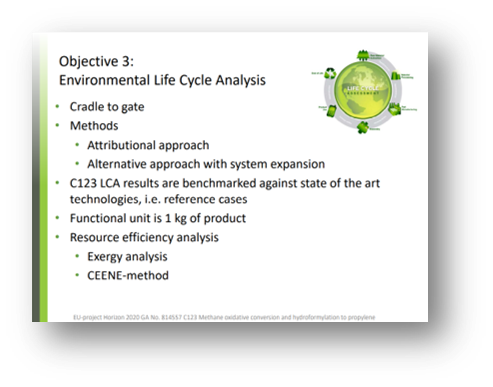- Have any questions?
- info@bizeolcat.eu

Ab Initio Multiscale Process Modeling of Ethane, Propane and Butane Dehydrogenation Reactions: A Review
April 12, 2021
1st- 4th June 2021 – #EU GreenWeek
May 31, 2021Webinar: New & innovative methods for the conversion of alkanes to olefins and aromatics

New & innovative methods for the conversion of alkanes to olefins and aromatics

New & innovative methods for the conversion of alkanes to olefins and aromatics

13° APRIL 2021
WEBINAR
SUMMARY




13° APRIL 2021
WEBINAR
New & innovative methods for the conversion of alkanes to olefins and aromatics
C123 , ZEOCAT-3D and BIZEOLCAT projects funded in 2019 by Horizon 2020 Research and Innovation (RIA) presented innovative and greener ways to convert alkanes into olefins and aromatics in a joint webinar.
The free webinar, organized by SINTEF (Norway), aimed to inform stakeholders and interested citizens exchanging lessons learned and advancements in “Catalytic transformation of hydrocarbons”.
141 persons registered with an average of 75 participants attending during the whole event.
Projects’ coordinators:
C123 project Richard Heyn, @SINTEF
Zeocat_3D Maria Tripiana, @idener
Bizeolcat Ana Villacampa, @Eurecat

C123: Valorizing Methane Resources into C3 Building Blocks – Joris Thybaut
ZEOCAT 3D:Overview and Main Goals – María Tripiana Serrano
BIZEOLCAT: New and innovative methods for the conversion of alkanes to olefins and aromatics – Ana Villacampa
Catalysts for Oxidative Conversion of Methane – Jordan Guillermot, CNRS
The C123 project is experimenting with different types of Catalysts for Oxidative Conversion of Methane, with promising results.
ZEOCAT-3D and beyond: 3D printed catalysts for chemical conversion – Vesna Middelkoop, VITO
3D printing of catalytic systems and chemical reactors by “direct write” allows obtaining highly adaptable and well-controlled design for optimal flow pathways Via Digital light printing. Also Zeocat develops, optimises and scales-up inks based on silica, alumina precursors and photosensitive polymers
Membrane reactors for dehydrogenation reactions – Fausto Gallucci, TUE
To improve light alkanes dehydrogenation and separation, membrane reactors are the way: very selective towards hydrogen and with high flux, coupling mechanical and chemical stability. Membrane Reactors also show Environmental and economic convenience in propylene production in respect with other traditional methodologies.
C123: Process and techno-economic analysis – Mieke Nieder-Heitmann, PDC
considering different feasibility scenarios to set up #prototype reactors for #methane conversion & #hydroformylation to #propylene
Application of ZEOCAT-3D technology in the biogas industry and beyond – Themistoklis Sfetsas, QLAB
The participation local #SME allows to test its innovative prototype methane dehydroaromatisation reactor in an operating #biogas plant. Prototype standardised unit bets on an efficient, safe & economically viable “plug & produce” technology, with a reduced footprint & great potential for scaling up
BIZEOLCAT: Dehydrogenations multi-scale process modelling – Blaž Likozar, NIC
Modelling study on multiscale dehydrogenations to investigate the role of surface oxidation on Catofin (propane/butane conversion in olefins) yields.
To stay update on project progresses, subscribe the Bizeolcat Newsletter
For any further information contact the project coordinator:









